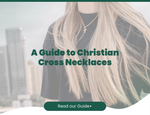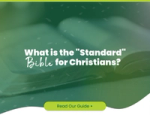Should we Adam and Eve it?
Lynn Williamson
Adam and Eve, the first humans, the basis of the human race, the cornerstones of a Biblical understanding of God’s creation – or are they?

Is there more than one way of thinking of Adam and Eve, and does it actually matter whether they existed or not?
One thing is sure, there is no universal agreement on this topic. Many Christians believe in Adam and Eve as the literal first humans, created by God as Homo Sapiens, who lived in a literal Garden of Eden.
Others though are less convinced by the idea that there is a specific intention to give an ‘historic’ account in Genesis. Famously CS Lewis spoke of parts of the Genesis story as ‘fabulous’ – by which he meant ‘like a fable’ rather than ‘wonderful’.
Then there’s the question of whether there is a divide between faith and science – it’s certainly difficult to believe in a literal Adam and Eve, and accept the theory of evolution. On that basis some think there must be a way of understanding Adam and Eve in the light of the evolutionary process.
So what are the options for understanding Adam and Eve?
1) Literal
According to a literal approach, Adam and Eve really existed, made out of earth by God in his own ‘likeness’. This understanding effectively denies the legitimacy of the evolutionary theory, and leaves people who believe in early forms of pre-humans (like Neanderthals) with a bit of explaining to do. It does however seem to fit well with a traditional understanding of original sin, and thus the need for redemption through Christ’s death on the cross.
2) The missing link
This way of looking at the story accepts the idea of Adam and Eve as literal individual people, or at least as representative individuals – but suggests that God created them via the process of evolution, making them deliberately by means of intelligent design. On these lines then, Adam and Eve are the ‘missing link’ the point at which the pre-human species turned into the first humans.
3) Universal Parable
While maintaining an acceptance that God created humanity, this approach takes the route of saying that the account of Creation in Genesis is actually to be read as a parable rather than a ‘history’ account. It is a way of explaining what happened, using language which was understood at the time of writing, and conveniently explains why we have two different takes on the same story in the first two chapters of Genesis.
4) Adam as an image of Israel
This approach has the creation account as a work of theology – setting out the place of Israel in God’s world. According to this way of thinking Adam is a way of understanding the failure of Israel to reach its potential, not a way of telling the story of the beginning of the world.
But does it matter whether we accept any one of these accounts rather the other? Over the centuries, believers of different stripes have taken different approaches to the question of who Adam and Eve were – and built or reconfigured their theology accordingly.
Where do you stand on this? Let us know in the comments….
Latest Blogs

Gifts
Finding Your Symbol of Faith: A Guide to Christian Cross Necklaces
Looking for the perfect symbol of faith? Explore our guide to Christian cross necklaces, from rustic wooden designs and sturdy men's chains to elegant silver pendants.

Gifts
The Best Christian Gifts for Under £20
Looking for a meaningful gift that won't break the bank? Explore our guide to the best Christian gifts under £20, from inspiring journals to beautiful home decor.

Gift Guide
15 Confirmation Gift Ideas for Boys and Girls
Celebrating a confirmation? Discover 15 meaningful gift ideas for boys and girls, from youth Bibles and jewellery to inspiring journals and keepsakes.

Bible
30+ Powerful Quotes About the Bible (For Inspiration in 2026)
Looking for inspiration? Discover a curated collection of the most powerful quotes about the Bible, from famous historical figures to modern theologians and Scripture itself.

Bibles
What is the "Standard" Bible for Christians?
Is there an "official" Bible that all Christians use? We explain the difference between the NIV, KJV, and ESV, and help you find the standard text for your church or personal reading.

Bible
"I Keep Failing to Read the Bible" – 5 Tips to Make the Habit Stick
Do you start a Bible reading plan only to quit a few weeks later? Stop the cycle of guilt. Here are 5 psychological tips and practical changes to help you build a Bible habit that actually lasts in 2026.
